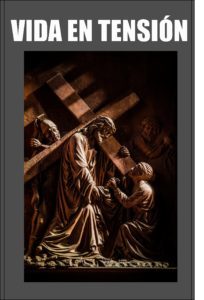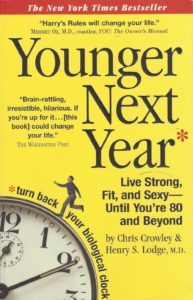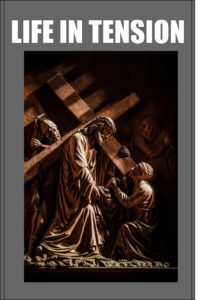Stephen W. Hiemstra's Blog, page 163
April 10, 2020
Resolver la Tensión en la Identidad
 Pero los humildes poseerán la tierra y
Pero los humildes poseerán la tierra y
se deleitarán en abundante prosperidad.
(Ps 37:11)
Por Stephen W. Hiemstra
Una resolución de las tensiones de la vida es que son absorbidas por nuestra identidad, definiendo nuestra propia imagen, relaciones, y esperada acciones y reacciones. Por ejemplo, una identidad pastoral implica pasar tiempo con Dios, interpretar las escrituras, orar con otras, predicar el evangelio, y ofrecer consuelo a todos; estas actividades se esperan de pastores y son una parte esencial de las capacitación de pastores. Igualmente, capacitar en humildad nos hace manso, una parte de nuestra identidad como los discipulados de Cristo.
Mansedumbre es Única
La tercera Beatitud es única de Mateo: “Honrado los humildes, pues ellos heredarán la tierra” (Matt 5:5) . Manso significa: “no [es] demasiado impresionado por una sentido de auto-importancia, gentil, humilde, considerado” (BDAG 6132).1 El manso es como humildad aplicada (pobre en espíritu)—un rasgo de carácter de ser humilde (Guelich 1982, 82), sugerido por no menos de tres versículos en Mateo:
1. “Tomen mi yugo sobre ustedes y aprendan de mí, que yo soy manso y humilde de corazón, y hallaran descanso para sus almas” (Matt 11:29).
2. “Digan a la hija de sion: mira, tu rey viene a ti, humilde y montado en un asna, y en un pollino, hijo de bestia de carga” (Matt 21:5).
3. “Entonces el sumo sacerdote, levantándose, le dijo:¿No respondes nada? ¿Qué testifican éstos contra Ti? Pero Jesús se quedó callado. Y el sumo sacerdote le dijo: te ordeno por el Dios viviente que nos digas si tú eres el Cristo (el Mesías), el hijo de Dios” (Matt 26:62-63).
En estos tres eventos—la invitación de Jesús al discipulado, su humilde desfile hacia Jerusalém, y su silencio durante el juicio—Jesús exhibió su mansedumbre. Sedler (2003, 92) observa lo que “cualquier que Jesús dijó [a su juicio] habría sido retorcido, vuelta, y rechazado.”2 La mansedumbre de Jesús se observa también en los escritos de los apóstoles Pedro, Santiago, y Pablo (e.g. 1 Pet 3:13–17, Jas 1:21, and 2 Cor 10:1).
Honra y Mansedumbre
En su escrito Neyrey (1998, 181–182) describe honra en mansedumbre en estos términos:3
Puede claro entenderse como motivo de elogio por negarse a ser una víctima…según una coreografía a los desafíos de honra, el manso podría ser una persona quien no hace reclamos de honra (e.g. Matt 21:5), o más probablemente, alguien quien no da una riposte [respuesta] a los desafíos y no respuesta con ira a los insultos. Desde este punto de vista, un manso se quita por completo de los juegos de honra típico del pueblo… no busca venganza.
La implicación aquí es que el manso elige sabiamente a permanecer en silencio, especialmente cuando hablar escalariá conflicto con una otra persona.
La problema de escalación se mencionó en el Sermón de la Monte cuando Jesus dijó:
1. Pero Yo les digo que todo aquél que esté enojado con su hermano será culpable ante la corte; y cualquiera que diga:`Insensato (Inútil)’ a su hermano, será culpable ante la corte suprema (el Sanedrín); y cualquiera que diga:`Idiota,’ será merecedor del infierno de fuego. (Matt 5:22)
2. Antes bien, sea el hablar de ustedes: sí, sí o no, no; porque lo que es más de esto, procede del mal (del maligno). (Matt 5:37)
3. Pero Yo les digo: no resistan al que es malo; antes bien, a cualquiera que te abofetee en la mejilla derecha, vuélvele también la otra. Al que quiera ponerte pleito y quitarte la túnica, déjale también la capa. Y cualquiera que te obligue a ir un kilómetro, ve con él dos. (Matt 5:39-41)
Mansedumbre como Estrategia
Savage (1996, 57–61) sugiere una estrategia de no resistir el mal, “nublando” [fogging] que consiste en encontrar algo en la critica a estar de acuerdo con para frustrar el agressor y no estar defensivo, como cuando Jesús respuesta cuando se le preguntó acerca de los impuestos (Matt 22:17-22). Más generalmente, el manso refugará a buscar vindicación, no ofrecerá una respuesta cuando le ceba actuar impudencialmente, o simplemente haga paz. Debemos preservar una identidad humilde al negarse a disputir, menospreciar, o participar en una respuesta a palabras duras. En otras palabras, defiende tu mansedumbre con el silencio y la humildad.
Ortberg (2012, 107) illustra la mansedumbre de Jesús por imaginer una charla que Jesús podría haberles dado los discípulos:4
Aquí está nuestra estrategia. No tenemos dinero, influencia, estatus, edificios, o soldatos…Les diremos [líderes judíos y romanos, zelotes, colaboradores, esenios] todo lo que están en el camino equivocado … Cuando nos odian—y muchos de ellos lo harán—no nos defenderemos, no escaparemos y no nos rendiremos. Seguiremos amándolos. Está mi estrategia.
La mansedumbre es una estrategia, no una debilidad, que nos identifica como cristianos, avanza el reino, y roba el trueno de nuestros adversarios.
Notas
1 Meek means to: “not [be] overly impressed by a sense of one’s self-importance, gentle, humble, considerate” (BDAG 6132).
2 Sedler (2003, 92) observes that “anything Jesus said [at his trial] would have been twisted, turned, and rejected.”
3 It can indeed be understood as grounds for praise for refusing to be a victim…according to the choreography of honor challenges, the ‘meek’ person could be one who makes no honor claims (e.g. Matt 21:5), or, more likely, one who does not give a riposte [response] to challenges and does not respond in anger to insults. In this light, a ‘meek’ person disengages entirely from the typical honor games of the village…failure to seek revenge (Neyrey 1998, 181–182).
4 Here’s our strategy. We have no money, no clout, no status, no buildings, no soldiers…We will tell them [Jewish and Romans leaders, Zealots, collaborators, Essenes] all that they are on the wrong track…When they hate us—and a lot of them will…we won’t fight back, we won’t run away, and we won’t give in. We will just keep loving them…That’s my strategy. (Ortberg 2012, 107)
Referencias
Bauer, Walter (BDAG). 2000. A Greek-English Lexicon of the New Testament and Other Early Christian Literature. 3rd ed. ed. de Frederick W. Danker. Chicago: University of Chicago Press. .
Guelich, Robert. 1982. The Sermon on the Mount: A Foundation for Understanding. Dallas: Word Publishing.
Neyrey, Jerome H. 1998. Honor and Shame in the Gospel of Matthew. Louisville: Westminster John Knox Press.
Ortberg, John. 2012. Who Is This Man? The Unpredictable Impact of the Inescapable Jesus. Grand Rapids: Zondervan.
Savage, John. 1996. Listening and Caring Skills: A Guide for Groups and Leaders. Nashville: Abingdon Press.
Resolver la Tensión en la Identidad
Ver también:
Gospel as Divine Template
Otras formas de participar en línea:
Sitio del autor: http://www.StephenWHiemstra.net,
Sitio del editor: http://www.T2Pneuma.com.
Boletín informativo: https://bit.ly/Meet_2020
The post Resolver la Tensión en la Identidad appeared first on T2Pneuma.net.
April 9, 2020
Mark 14: Maundy Thursday (4)
 Foot washing
Foot washing
“Three times a year all your males shall appear before the LORD your God at the place that he will choose: at the Feast of Unleavened Bread (הַמַּצּ֛וֹת), at the Feast of Weeks (הַשָּׁבֻע֖וֹת), and at the Feast of Booths (הַסֻּכּ֑וֹת; Deuteronomy 16:16 ESV).
By Stephen W. Hiemstra
Holy Week as we know it is often celebrated at the same time as the Jewish Feast of Unleavened Bread (Festival of Matzos) often called Passover. Dates differ because of differences in the calendar rules. In Jesus’ time, Passover was one of three festivals that required the faithful to travel to Jerusalem. The other festival familiar to Christians is the Feast of Weeks commonly known as Pentecost. The Feast of Booths is a harvest festival in the fall.
Passover Backstory
Passover commemorates the release of the Jewish people from slavery in Egypt. God instructed Moses to tell the Israelite to sacrifice a lamb and place the blood of the lamb over their door-posts so that the angel of death would pass them by. On the night of the Passover, the angel of death struck down the first born of Egypt and passed over the Israelite households. Pharaoh reacted immediately by expelling the Israelite slaves. They left so quickly that there was not time to bake bread for the journey. Instead, they prepared bread without letting the dough rise—unleavened bread (Exodus 12). Mark 14:12-26 describes how Jesus and his disciples celebrated the Passover meal in Jerusalem now remembered as the Last Super.
Covered by the Blood
The Last Super is important to Christians because it introduces the new covenant in Christ. The word, covenant, found in v. 24 appears nowhere else in Mark’s Gospel and alludes to the covenant meal that Moses and the Elders of Israel shared with God on Mount Sinai (Exodus 24:9-11). The grim symbolism of the wine as the blood of Christ is an allusion to the blood of the Passover lamb (Exodus 12:7) which alerted the angel of death to pass over households displaying the blood. In this sense, as Christians we are (like the door posts) covered by the blood of Christ. By Jesus’ blood our sins are forgiven and we are passed over (Hebrews 9:11-28).
Where Does Maundy Thursday Come From?
Where does the name, Maundy Thursday, come from? One theory is that it is Middle English for the Latin word, Mandatum, which means command. According to some traditions, Maundy Thursday focuses on Jesus’ lesson on servant leadership: “If I then, your Lord and Teacher, have washed your feet, you also ought to wash one another’s feet” (John 13:14 ESV).
Mark 14: Maundy Thursday
Also see:
A Roadmap of Simple Faith
Christian Spirituality
Looking Back
A Place for Authoritative Prayer
Other ways to engage online:
Author site: http://www.StephenWHiemstra.net,
Publisher site: http://www.T2Pneuma.com.
Newsletter: https://bit.ly/Meet_2020
The post Mark 14: Maundy Thursday (4) appeared first on T2Pneuma.net.
April 8, 2020
Water Cooler Observations, April 8, 2020
 By Stephen W. Hiemstra
By Stephen W. Hiemstra
Midwesterners have a reputation for being friendly people. As a kid, I spent a lot of time on my grandparent’s farm where the reason for the positive attitudes was very simple. Out on the farm, you did not see a lot of people and, when you did, you were happy to see them.
Walking around the neighborhood these past several weeks, I have seen more smiling faces than all last year. As I enter my fifth week sheltering in place, I too am happy to see my neighbors.
Secondary Trauma
The relentless discussion of corona virus on television is triggering a form of secondary trauma that manifests itself as unexplained anxiety. Secondary trauma normally refers to the trauma induced in caregivers during horrible disasters, like plane crashes and earthquakes. Seeing large numbers of suffering people can overwhelm the caregivers, triggering anxiety and depression.
If you suffer from secondary trauma, limit your television time watching news reports and try getting outside. Sunshine and exercise are natural anti-depressants that you can use to keep a healthy balance.
Bright Spots
Optimism today centered around decreasing hospital admissions in NYC (probably due to social distancing) and the discovery of an antibody treatment (link) that may soon be available to first responders.
Antibody treatment is really good news, but it is not a vaccine. How quickly it can be rolled out, remains to be seen.
Social distancing works to reduce hospital admissions by spreading out the caseload over time. This allows hospitals to treat the critically ill patients without exceeding capacity limitations on staff and equipment, like ventilators. This way lives are saved that might otherwise have been lost.
Corona Statistics
For me, reviewing statistics on the corona virus is an anxiety-inducing event. The mortality rate in the U.S. rose today to 3.0 percent with the cases and deaths both rising about ten percent daily.
Corona Virus Cases, Deaths, and Mortality Rates by Region, April 7, 2020
Countries
Cases
Deaths
Mortality Rates
Count
Change 1/
Count
Change 1/
Western Europe
611,964
4.4%
51,223
6.5%
8.4%
Eastern Europe
26,329
6.7%
674
14.0%
2.6%
Africa
9,758
6.7%
473
8.7%
4.8%
Middle East
110,502
6.7%
4,611
5.2%
4.2%
Asia
119,236
2.2%
3,891
0.6%
3.3%
Australia and New Zealand
6,787
2.0%
43
16.2%
0.6%
Pacific
11,290
7.8%
472
6.5%
4.2%
Atlantic
87
11.5%
9
28.6%
10.3%
North America
385,404
9.0%
11,334
13.9%
2.9%
Central America
5,469
8.8%
212
18.4%
3.9%
Caribbean
2,669
5.1%
116
7.4%
4.3%
Latin America
27,493
7.2%
1,008
12.5%
3.7%
World
1,316,988
5.8%
74,066
7.4%
5.6%
1/ Percentage change from prior day reported
Source: European Centre for Disease Prevention and Control
Corona virus hot spots around the world are much worse than the U.S. Europe remains the worst hit area of the world with Italy and France reporting mortality rates above 12 percent, likely because of a large elderly population. The Europe situation is particularly worrisome because European have socialized medicine not available in the U.S.
In the U.S. we have many undocumented workers and others not covered by health insurance. Think of all the people laid off in recent weeks. If these people are slow to ask for medical treatment when they need it, then they may infect others and the U.S. mortality rates will rise to compete with European rates.
Corona Virus Hot Spots by Country, April 7, 2020
Countries
Region
Cases
Deaths
Mortality rates
Italy
1
132,547
16,525
12.5%
France
1
74,390
8,911
12.0%
United_Kingdom
1
51,608
5,373
10.4%
Netherlands
1
18,803
1,867
9.9%
Spain
1
135,032
13,055
9.7%
Indonesia
7
2,491
209
8.4%
Belgium
1
20,814
1,632
7.8%
Sweden
1
7,206
477
6.6%
Iran
4
60,500
3,739
6.2%
Mexico
10
2,439
125
5.1%
Note: Counties with at least 2,000 cases.
Source: European Centre for Disease Prevention and Control
Pre-Existing Conditions
What counts as a pre-existing condition to raise mortality rates for corona virus patients?
Your probability of death about doubles for age groups over sixty, being male, and having certain medical conditions. Heart disease, chronic respiratory ailments, diabetes, hyper-tension, and cancer are all factors more than doubling your risk. Deaths in minority communities are especially high because of these pre-existing conditions.
These statistics come from China where treatment options may be more limited. For details, see (link).
Economy
After 9-11, economists at the Comptroller of the Currency, which regulates national banks, were busy doing regional and industrial studies to determine the distribution of losses in the economy and how they would affect banks.
The process of determining these economic effects was to examine the industries that would have obvious problems, like hospitality, airlines, and travel business, and look to the Census data to see where these industries were concentrated. Banks serving those areas were then assumed to have been disproportionally affected.
This week I wondered about how laid off workers would pay their mortgages in the coming months. What happens to their lenders?
Also, corona virus deaths may reach levels not previously seen–what happens to the insurance companies standing behind hospitals and individuals that pass away that have insufficient reserves? Companies like hospitals, pharmacies, and grocery stories are likely to have corona related deaths where infection obviously took place on the job.
Response of Churches
Just about every church now offers some form of online worship on Sundays. Many have added midweek Zoom get togethers, Facebook parties, and video devotions. Many are quite good. Check your favorite church website for details.
Turning to God in Distress: A Gethsemane Moment
When you are in pain or afraid, where do you turn?
When Jesus was facing death in the Garden of Gethsemane, he turned to God instead of his pain and fear.
Then Jesus went with them to a place called Gethsemane, and he said to his disciples, “Sit here, while I go over there and pray.” And taking with him Peter and the two sons of Zebedee, he began to be sorrowful and troubled. Then he said to them, “My soul is very sorrowful, even to death; remain here, and watch with me.” And going a little farther he fell on his face and prayed, saying, “My Father, if it be possible, let this cup pass from me; nevertheless, not as I will, but as you will.” (Matt 26:36-39 ESV)
We face a Gethsemane Moment today worldwide. Where will you turn?
Spiritual Disciplines
Turn to God in your pain.
Consider reading Psalm 8 as a prayer, if you can not find the words to pray. I did this myself for about ten years.
Consider practicing continuous prayer–talking to God while you go about your day. I find prayer comes more easily when I am jogging or swimming laps. One of my own prayers is. Prayer for Shelter.
Consider daily journaling. I start my days in the morning with a daily examine–looking for God’s work in your life over the previous day.
Consider daily bible reading or study. I try to read a Psalm daily after I journal. Once I finish reading them all, I start over.
Consider joining a small group. It is a great comfort seeing people and talking with them about what you are going through. If you don’t have a group, check your favorite church website or call the church.
Whatever you do, turn to God.
Water Cooler Observations, April 8, 2020
Also see:
Water Cooler Observations, April 1, 2020
Water Cooler Observations, March 25, 2020
Corona Virus Versus the Flu
Black Plague
CDC Flu Statistics
Managing Change
Believer’s Prayer
Other ways to engage online:
Author site: http://www.StephenWHiemstra.net
Publisher site: http://www.T2Pneuma.com.
Newsletter: https://bit.ly/Meet_2020
The post Water Cooler Observations, April 8, 2020 appeared first on T2Pneuma.net.
April 7, 2020
Exercise Nuts Live Longer
 Chris Crowley and Henry S. Lodge. 2007. Younger Next Year: Live Strong, Fit, and Sexy–Until You’re 80 and Beyond. Male and Female editions. New York: Workman Publishing.
Chris Crowley and Henry S. Lodge. 2007. Younger Next Year: Live Strong, Fit, and Sexy–Until You’re 80 and Beyond. Male and Female editions. New York: Workman Publishing.
Reviewed by Stephen W. Hiemstra
My annual physical examination yielded a surprising result this month–my cholesterol statistics improved rather markedly. What had I done differently? Really only two things: I ate more fresh vegetables and I added resistance training to my daily exercise. What did these two things have in common? They were both recommendations from Chris Crowley and Henry S. Lodge’s book, Younger Next Year.
Introduction
Crowley and Lodge make an audacious claim: over 50 percent of all illness and injuries in the last third of your life can be eliminated by changing your lifestyle (7). What changes do they recommend? A big part of their advice is regular, strenuous exercise including resistance training. What is regular? At least six days a week. What is strenuous? Exercise able to provide an aerobic effect. What is resistance training? They recommend a program of weight lifting. If you follow their advice, then you can remain like a physically fit, 50 year-old well past the age of 80.
Crowley and Lodge’s claim is credible for two reasons. First, when I worked as a chaplain intern in 2011 and 2012, I noticed that about half the patients that I visited in the emergency department were there as a consequence of poor lifestyle choices. Poor choices included things like obesity, drug addiction, sexual adventurism, and so on. Later, the chief surgeon in the department corrected my estimate and claimed that poor lifestyle choices actually accounted for about three-quarters of the visits to the deparment.
Second, the Washington Post ran an article earlier in the year comparing life-expectancy in two Florida counties. The first county was populated by exercise nuts and the second county by couch potatoes. The article reported that the exercise nuts were living healthier and several years longer than the couch potatoes. This issue caught Congress’ attention (the reason for the article) because the difference in life expectancy rates and health outcomes implied that the exercise nuts were being subsidized by the couch potatoes in federal benefit programs, such as social security and medicare. Politicians are good at following the money trail!
Background and Organization
Crowley is a retired attorney; Lodge is his physician and an expert in gereatric (old age) medicine. The one knows how to get your attention; the other knows how to keep it.
The book is organized into two parts: taking charge of your body and taking charge of your life. Part 1–Taking charge of your body–deals with the problem that after age 50 your body begins to athropy. Exercise helps to maintain an active metabolism and retain body weight. In other words, use it or loose it. Part2–taking charge of your life–focuses on the problem of remaining emotionally active and connected when the natural tendency is to slow down and withdraw.
Strength Training
While many of the topics covered in this book may be found elsewhere, a real surprise comes in the chapter entitled: The Biology of Strength Training (165). Being an aerobics kind of guy, I might have skipped this chapter, but that would have been a big mistake.
***Weight training builds not only strength, but also coordination.***
Both outcomes reduce senior injuries from falls. More strength means that we have the strength to reverse a fall; better coordination means that we catch ourselves more quickly when we fall. Because seniors often are hospitalized because of falls, this insight is a big deal.
Assessment
Younger Next Year is a book that I have gifted to most older members of my family. More generally, the need for the church to focus on the body as the temple of God’s Holy Spirit (1 Corinthians 6:19) is long overdue. Some might be squeamish about the authors’ indelicate comments about senior sexuality, but motor on–the book’s benefits outweigh the cost.
Exercise Nuts Live Longer
Also see:
Matthews Teaches Stretching
Books, Films, and Ministry
Other ways to engage online:
Author site: http://www.StephenWHiemstra.net,
Publisher site: http://www.T2Pneuma.com.
Newsletter: https://bit.ly/Meet_2020
The post Exercise Nuts Live Longer appeared first on T2Pneuma.net.
April 6, 2020
Grief Defines Identity: Monday Monologues (podcast) April 6, 2020
 Stephen W. Hiemstra 2020 (Ken Burtram Photography)
Stephen W. Hiemstra 2020 (Ken Burtram Photography)By Stephen W. Hiemstra
This morning I will share a prayer and reflect on Grief and Identity. After listening, please click here to take a brief listener survey (10 questions).
To listen, click on this link.
Hear the words; Walk the steps; Experience the joy!
Grief Defines Identity: Monday Monologues (podcast) April 6, 2020
Also see:
Monday Monologue On March 26, 2018
Other ways to engage online:
Author site: http://www.StephenWHiemstra.net,
Publisher site: http://www.T2Pneuma.com.
Newsletter: https://bit.ly/Meet_2020
The post Grief Defines Identity: Monday Monologues (podcast) April 6, 2020 appeared first on T2Pneuma.net.
April 5, 2020
Mark 11:1-11—Palm Sunday (4)
 Palm Sunday Donkey
Palm Sunday Donkey
By Stephen W. Hiemstra
I beg you Lord, deliver us! I beseech you Lord, prosper us! (Psalm 118:25 SWH)[1]
Hosanna (הוֹשִׁ֨יעָ֥ה נָּ֑א): What is in a word?
Mark’s Palm Sunday
Mark’s account of Palm Sunday is amazingly simple: The disciples hunt around for a donkey; they have a small parade; some people start shouting; they scope out the temple and go home. No palms! No Pharisees hanging around. No prophecy.
Parade
Still, this is no ordinary parade. France notes that nowhere else in the gospels do we read of Jesus riding . The parade fulfills the prophecy: Rejoice greatly, O daughter of Zion! Shout aloud, O daughter of Jerusalem! Behold, your king is coming to you; righteous and having salvation is he, humble and mounted on a donkey, on a colt, the foal of a donkey (Zechariah 9:9 ESV).
Hosanna
The whole story builds up to v. 9 and the shouting: Hosanna! Blessed is he who comes in the name of the lord (Mark 11:9). Hosanna is a transliteration of a Hebrew phrase appearing only in Psalm 118:25 cited above. The rest of the phrase is cited from the next verse (Psalm 118:26). Beale and Carson describe Psalm 118 as a “royal song of thanksgiving for military victory” regularly sung at Passover. The truncation of Psalm 118:25 to exclude the second half of the sentence (I beseech you Lord, prosper us), underscores the military intentions of the Palm Sunday crowd. The next verse makes this point very plain: “Blessed is the coming kingdom of our father David”(Mark 11:10).
Who is really being blessed here?
The Greek in v. 9 admits a second translation: “Blessed is the one who comes in the name of the Lord.”
Mother Teresa
Mother Teresa once described herself as Christ’s donkey. When we come humbly in the name of the Lord, in some sense we too become Christ’s donkey. And we too are blessed.
Fottnotes
[1] אָנָּ֣א יְ֭הוָה הוֹשִׁ֨יעָ֥ה נָּ֑א אָֽנָּ֥א יְ֜הוָ֗ה הַצְלִ֨יחָ֥ה נָּֽא (Psalm 118:25 WTT).
R.T. France. The New International Greek Testament Commentary: The Gospel of Mark. Grand Rapids: Eerdmans. P. 428.
G.K. Beale and D.A. Carson [Editors]. 2007. Commentary on the NT Use of the OT. Grand Rapids: Baker Academic. Pp. 206-207.
Mark 11:1-11—Palm Sunday
Also see:
A Roadmap of Simple Faith
Christian Spirituality
Looking Back
A Place for Authoritative Prayer
Other ways to engage online:
Author site: http://www.StephenWHiemstra.net,
Publisher site: http://www.T2Pneuma.com.
Newsletter: https://bit.ly/Meet_2020
The post Mark 11:1-11—Palm Sunday (4) appeared first on T2Pneuma.net.
Prayer for Shelter
 By Stephen W. Hiemstra
By Stephen W. Hiemstra
Almighty Father,
I praise you for your enduring presence and manifest glory all around. Your glory wakes me in the morning; its sustains my days; and it protects me during the night.
Empty me of all despair and bitterness that deflate my life. Help me to confess my weaknesses, my brokenness, and my sin to make room for your glory, your mercy, and your love.
Heal me with your presence when only your presence will do. Bind up my wounds; give me hope; and guide me in your ways that I might see the new day that you have prepared for me.
In the power of your Holy Spirit and in Jesus’ precious name, Amen.
Prayer for Shelter
Also see:
Believer’s Prayer
Other ways to engage online:
Author site: http://www.StephenWHiemstra.net
Publisher site: http://www.T2Pneuma.com.
Newsletter: https://bit.ly/Meet_2020
The post Prayer for Shelter appeared first on T2Pneuma.net.
Oración por Refugio
 Por Stephen W. Hiemstra
Por Stephen W. Hiemstra
Padre Todopoderoso,
Te alabo para tu duradera presencia y tu gloria manifiesta en cada lugar. Tu gloria despiertame por la mañana; sustenta mis días; y protégeme durante la noche.
Vacíame de toda desesperación y amargura que desinflan mi vida. Ayúdame confesar mis debilidades, mi quebrantamiento, y mi pecado a hacer espacio para tu gloria, tu misericordia, y tu amor.
Sáname con tu presencia cuando solo tu presencia harará. Venda mi heridas; dame esperanza; y guíame en tus formas para que pueda ver el nueva dia que me has preparado.
En el poder de tu Espíritu Santo y en el precioso nombre de Jesús, Amén.
Oración por Refugio
Ver también:
Oración del Creyente
Otras formas de participar en línea:
Sitio del autor: http://www.StephenWHiemstra.net,
Sitio del editor: http://www.T2Pneuma.com.
Boletín informativo: https://bit.ly/Meet_2020
The post Oración por Refugio appeared first on T2Pneuma.net.
April 3, 2020
Grief Defines Identity
 My Father, if it be possible,
My Father, if it be possible,
let this cup pass from me;
nevertheless, not as I will, but as you will.
(Matt 26:39)
By Stephen W. Hiemstra
The emotional tension within ourselves is never greater than when we mourn, which requires a decision: do we turn into our pain in self-pity or do we turn to God in faith? Standing in the shadow of the cross at Gethsemane, Jesus turned to God when he faced this decision.
The decisions we make and the pains we bear shape our identity because they are both unavoidable and costly—we do not normally choose to experience pain. Pain and grief transform us and the only emotion that appears in the Beatitudes is grief.
We grieve when we lose something important. In writing about the second Beatitude, Evangelist Billy Graham (1955, 20–26) identified five objects of mourning:
Inadequacy—before you can grow strong, you must recognize your own weakness
Repentance—before you can ask for forgiveness, you must recognize your sin;
Love—our compassion for suffering of brothers and sisters takes the form of mourning and measures our response to Christ’s commandment to love God and love our neighbor,
Soul travail—groaning for the salvation of the lost; and
Bereavement—mourning over those that have passed away.
These objects of grief can also be categorized functionally, as:
Material loss;
Relationship loss;
Intra-psychic loss—loss of a dream;
Functional loss—including loss of autonomy;
Role loss—like retirement; and
Systemic loss—like departure from your family of origin (Mitchell and Anderson 1983, 36–45).
Each loss is unique and must be separately grieved which takes time and energy. When we neglect to take the time to grieve our losses, the grief does not magically disappear; it can come back in the form of sudden outbreaks of anxiety or depression without obvious explanation—emotional hijackings. We try to avoid grief because it reminds us of our mortality and, in doing so, frequently challenges the flawed assumptions that we prefer to live by.
Loss and grief were not always ignored, as my grandfather taught me when my grandmother suffered from Alzheimer’s disease. In spite of being over one hundred years old, my grandfather expressed his love by caring for her at home and set an example of sacrificial love and faithfulness that I will never forget.
Saint Francis of Assisi said it best:
Lord, grant that I may seek rather
To comfort than to be comforted,
To understand than to be understood,
To love than to be loved; For it is by giving that one receives,
It is by self-forgetting that one finds,
It is by forgiving that one is forgiven,
It is by dying that one awakens to eternal life (Graham 1955, 24).
The griefs we bear and the choices we make strengthen our faith, define our character, and temper our relationships, working in us like the refiner’s fire (Mal 3:3).
Jesus teaches: “Honored are those who mourn, for they shall be comforted.” (Matt 5:4)
References
Bonhoeffer, Dietrich. 1995. The Cost of Discipleship (Orig. pub. 1937). New York: Simon and Schuster.
Graham, Billy. 1955. The Secret of Happiness. Garden City, NY: Doubleday and Company, Inc.
Mitchell, Kenneth R. and Herbert Anderson. 1983. All Our Losses; All Our Griefs: Resources for Pastoral Care. Louisville: Westminster John Knox Press.
Nouwen, Henri J.M. 2010. Wounded Healer: Ministry in Contemporary Society (Orig pub 1972). New York: Image Doubleday.
Grief Defines Identity
Also see:
Preface to a Life in Tension
Other ways to engage online:
Author site: http://www.StephenWHiemstra.net
Publisher site: http://www.T2Pneuma.com
Newsletter: https://bit.ly/Meet_2020
The post Grief Defines Identity appeared first on T2Pneuma.net.
El Luto Define Identidad
 Padre Mío, si es posible, que pase de mí esta copa;
Padre Mío, si es posible, que pase de mí esta copa;
pero no sea como yo quiero, sino como tú quieras.
(Matt 26:39)
Por Stephen W. Hiemstra
La tensión emocional dentro nosotros es nunca más grande que cuando lloramos lo que requiere una decisión: ¿Nos volvemos en nuestra dolor en autocompasión o nos volvemos a Dios en la fe? De pie a la sombra de la Cruz en Getsemani, Jesús se volvió hacia Dios cuando enfrentó esta decisión.
Las decisiones que tomamos y los dolores que soportamos dar forma a nuestra identidad porque son inevitables y costosos—normalmente no elegimos a experimentar dolor. La pena y el luto nos transforman y la única emoción que aparece en las Beatitudes es el luto.
Nos afligimos cuando perdemos algo importante. Al escribir sobre la segunda Beatitud, Evangelista Billy Graham (1955, 20-26) identificó cinco objetos de duelo:
Inadecuacia—ante de poder fortalecerse, debe reconocer su propria debilidad;
Arrepentimiento—ante de que puede pedir perdón, debe reconocer su pecado;
Amor—nuestra compasión por el sufrimiento de hermanos y hermanas toma la forma de duelo y mita nuestra respuesta al mandamiento de Cristo a amar a Dios y a nuestro prójimo.
Alma tristeza—gimiendo por la salvación de los perdidos; y
Duelo: luto por aquellos que han fallecido.
Estos objetos de luto se pueden también clasificar funcionalmente, como:
Pérdida de materiales;
Pérdida de relación;
Pérdida intra-psíquica—pérdida de un sueña;
Pérdida funcional—incluso pérdida de autonomía.
Pérdida de roles—como la jubilación; y
Pérdida sistémica—como la partida de su familia de origin (Mitchell and Anderson 1983, 36–45).
Cada pérdida es única y debe lamentarse por separado lo que toma tiempo y energía. Cuando negamos a tomar tiempo para llorar sobre nuestras pérdidas, el dolor no desaparece mágicamente; puede volver en la forma de brotes repentinos de ansiedad o depresión sin explicación obvia—secuestros emocionales. Tratamos de evitar el dolor porque nos recuerda nuestra mortalidad y, al hacerlo, con frecuencia desafía los supuestos erróneos por los que preferimos vivir.
Pérdida y el luto no siempre se ignoraron, ya que mi abuelo me enseñó cuando mi abuela padecía la enfermedad de Alzheimer. A pesar de tener más que cien anos de edad, mi abuelo expresó su amor al cuidarla a casa y dió un ejemplo del amor sacrificial y fidelidad que nunca olvidaré.
San Francisco de Asís lo dijó mejor:
Señor, concédeme que pueda buscar hacia
Consolar que ser consolada,
Entender que ser entendido,
Amar que ser amado
En dar que le receive,
En auto-olvidar que uno encuentra,
En perdonar que se perdonado,
En muerer que uno desperta a la vida eterna.1
Las penas que aceptamos y los elecciones que hacemos fortalecen nuestra fe, determinan nuestra carácter, soportan nuestra relaciones, moderan en nosotros como el fuego del fundido (Mal 3:3).
Jesús enseña: “Honrados los que lloran, pues ellos serán consolados” (Matt 5:4).
Notas
1 Lord, grant that I may seek rather To comfort than to be comforted, To understand than to be understood, To love than to be loved; For it is by giving that one receives, It is by self-forgetting that one finds, It is by forgiving that one is forgiven, It is by dying that one awakens to eternal life (Graham 1955, 24).
Referencias
Bonhoeffer, Dietrich. 1995. The Cost of Discipleship (Orig. pub. 1937). New York: Simon and Schuster.
Graham, Billy. 1955. The Secret of Happiness. Garden City, NY: Doubleday and Company, Inc.
Mitchell, Kenneth R. and Herbert Anderson. 1983. All Our Losses; All Our Griefs: Resources for Pastoral Care. Louisville: Westminster John Knox Press.
Nouwen, Henri J.M. 2010. Wounded Healer: Ministry in Contemporary Society (Orig pub 1972). New York: Image Doubleday.
El Luto Define Identidad
Ver también:
Gospel as Divine Template
Otras formas de participar en línea:
Sitio del autor: http://www.StephenWHiemstra.net,
Sitio del editor: http://www.T2Pneuma.com.
Boletín informativo: https://bit.ly/Meet_2020
The post El Luto Define Identidad appeared first on T2Pneuma.net.



